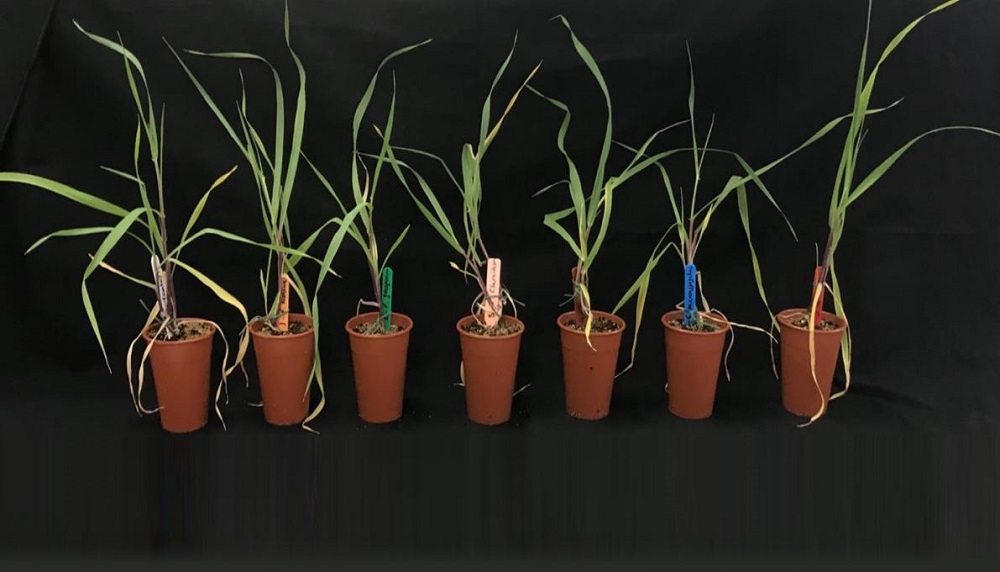Can we harness the power of crop-friendly fungi?
Monday, 11 September 2023
Arbuscular mycorrhizal (AM) fungi and crops can work together for mutual gain. A new PhD studentship report examines how these crop-friendly fungi can be nurtured by management.
About AM fungi
Most land plants, including agricultural crops, form beneficial (symbiotic) relationships with AM fungi.
When these fungi colonise root cells, they form branch-like structures (arbuscules) that can help transfer nutrients (largely phosphate and nitrogen) to crops.
These fungi may benefit crops in other ways too. For example, some studies show a link between them and crop tolerance to pests, pathogens and drought.
However, some farming practices can reduce the abundance and diversity of AM fungal populations:
- Artificial fertilisers (reducing AM fungi supply of nutrients to crops)
- Soil disturbance (damaging mycorrhizal networks)
- Bare land (breaking down mycorrhizal networks)
In 2018, AHDB and the AgriFood Charities Partnership funded a PhD studentship project to develop a better understanding of how to tap into the power of these root-loving organisms.
Working with NIAB and the University of Cambridge, PhD student George Crane has now submitted the project’s findings in a new report.
What did the study include?
The work set up bespoke trials (field and glasshouse) and capitalised on established field-based projects (FERA Big Soils, Innovative Farmers and NIAB’s New Farming Systems: fertility-building rotations trial).
George inoculated crops with five AM fungal species (applied individually or in a five-species commercial mix).
He studied four cash crops (spring barley, maize, leek and oats) and several cover crop species (in isolation and in mixtures).
Some trials also investigated the influence of nitrogen application rate and the use of anaerobic digestate.
Several measurements were taken to help gauge treatment impact, including assessment of percentage root length colonisation (RLC) by AM fungi, the abundance and diversity of AM fungi, and crop yields.
Spring barley pot trials
 NIAB
NIAB
The spring barley (Laureate) plants above are from the mycorrhizal glasshouse trials (seven weeks after inoculation). Left to right: control (no treatment), Funneliformis mosseae, F. geosporum, Claroideoglomus claroideum, Rhizophagus irregularis, Glomus microaggregatum and a five-species commercial mix.
What were the key findings?
Data from 67 sites identified 84 diverse types of AM fungi.
Crop impacts
In general, inoculation of crops did not increase the amount of root colonised by or the diversity of AM fungi. The applied species were also not found in high abundance.
The exception was in a highly mycorrhizal leek crop, which displayed increased diversity and RLC (compared to some other treatments). These increases were associated with higher yields in leek.
In general, increased AM fungi diversity and RLC had a mixed impact on crop growth and yield.
In an oats field trial, higher yields correlated with increased RLC. However, no significant positive effect was detected in spring barley and maize field trials.
A glasshouse trial recorded a reduction in spring barley biomass with increased RLC. In this inoculated trial, there was a dominance of one AM fungi species.
George also found that multiple iterations of cover crops could positively influence the diversity and abundance of AM fungi as well as increase their plant-colonising ability.
Microscopic analysis of roots
 with arbuscular mycorrhizal (AM) fungi structures clearly present.JPG) NIAB
NIAB
The image above shows a microscopic analysis of a cover crop root (oat) with arbuscular mycorrhizal fungi (AMF) structures clearly present.
Nitrogen application
As expected, nitrogen fertilisation had positive impacts on yield. However, when nitrogen was applied at half the recommended rate, there may have been nutrient supplementation by rhizobia associating with leguminous cover crops.
Although nitrogen application did not influence RLC in spring barley, it did influence AM fungal community composition, with the full recommended rate associated with a simplified AM fungi community (compared with the 0% and 50% treatments).
Anaerobic digestate (single application) resulted in variable impacts on AM fungal community composition and had no effect on cash crops. However, a lack of treatment replication made it a challenge to draw firm conclusions.
Conclusion
The relationships between AM fungi and plants are ancient and complex.
Despite this, a growing body of evidence suggests that AM fungal populations need to be nurtured over time.
Certainly, the impact of any amendment applied once is likely to be limited.
Access the final report for this PhD
The main aim of the AHDB studentship programme is to develop skills to support innovation in agriculture.
Also…
If you found this article interesting, you may enjoy this PhD report. It examined the impact of management on wider bacterial and fungal community diversity.
The most striking observation was that soil management had less impact on soil microbial diversity than the location or season.
Measuring changes in soil biology in response to long-term management practices (PhD)


